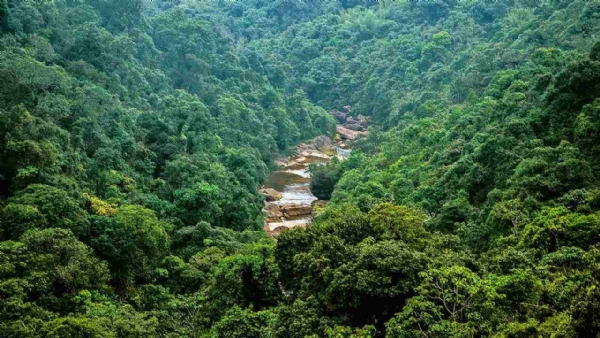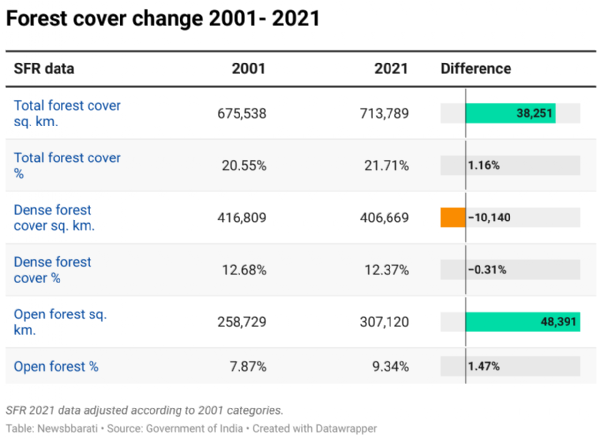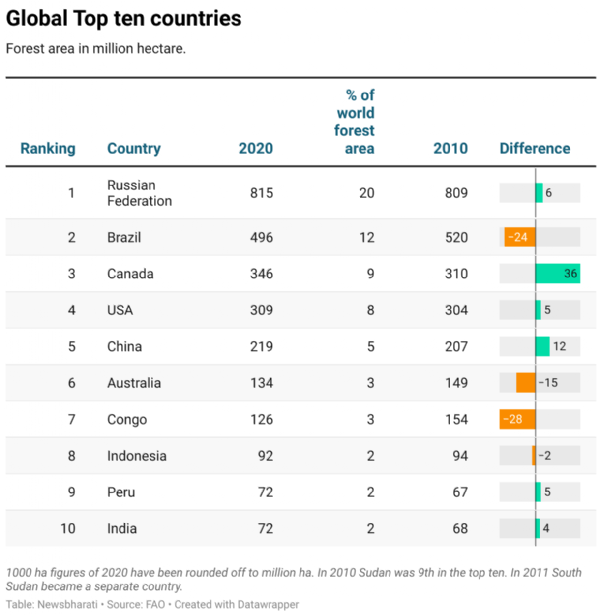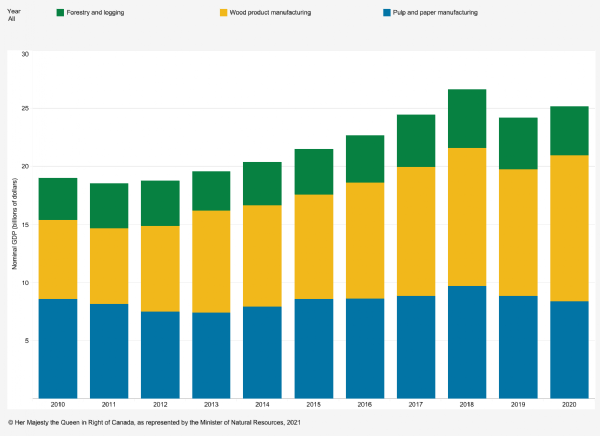Forest Cover in India: Some facts
26 Sep 2022 15:22:05
Since the last few decades of the previous century, the whole world has started talking about climate change. There were various conferences that were held over some decades. The increasing carbon emission has also increased the pressure on the world to take some action against climate change.

Trees and hence the forests are a crucial part of this war against climate change. Trees, during photosynthesis, use carbon to create food and release oxygen is the basic science that we all learned in school, which is why they become so important when we talk about climate change. Fortunately, India is actually performing reasonably well in this aspect. Let’s have a look at some figures, but before that, we must learn the terms that are used.
• Very dense forest- All lands with tree cover (including mangrove cover) canopy density over 70% and above.
• Mod dense forest- All lands with tree cover (including mangrove cover) canopy density between 40% and 70% above.
• Open forest- All lands with tree cover (including mangrove cover) canopy density between 10% and 40%.
• Scrub- All forest lands with poor tree growth mainly of small or stunted trees have canopy densities of less than 10%.
• Non-forest- Any area not included in the above classes.
Also Read: India’s Green Energy Story
Understanding these terms is important. A number of narratives can be created around and with the help of these terms. The following table and chart depict the situation of different types of forest cover in India in 2021. The data is taken from the India State of Forest Report (ISFR), 2021. In this year the forest covered was 24.62% of India’s total area as per the PIB release on 13th January 2022. The same PIB release also mentions the increase in the forest area. The numbers also support the above statement. Even though the difference between forest cover in 2001 and 2021 is less, it is important to note that, India has achieved this difference by being a developing country. At the same time, it is unfortunate that India has lost some of its dense forest covers.

Amongst a huge ecology vs. economy conflict, India has achieved a marginal increase in the total forest cover and this is very important. On the other hand, we can see there are numerous other countries that are on the top of the list. All these are developed nations.

As per recent data by Canada, lumbering or different wood product contribute notably to the Canadian economy. As we can see in the graph below, wood-based industries’ (Forest and logging, Wood product manufacturing, and Pulp and paper manufacturing) nominal GDP has increased over the years, except for 2019. Later in 2019-20, it has again seen a small rise. Therefore, it is of less surprise that the forest cover in Canada has increased the most.

As written above, forest cover is necessary to fight against climate change. As the numbers have shown, India had also done well on this front. Along with improving forest cover, India is also taking various other measures eg. Promoting electric cars, promoting ethanol-based fuel, hydrogen fuel, public transport, etc. Even India is electrifying its railway network as a priority to reduce carbon emissions. Also, India is promoting solar energy production and shifting power generation to renewable energy sources. We will read about it in other articles.
